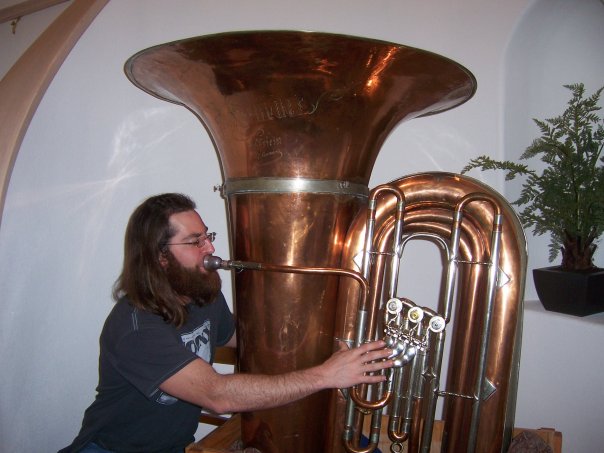Neptune wrote:In my view the tuba should be its own distinctive voice and not try to blend too much with trombone which provides a good reason to use a 6/4.
Makes me wonder why quintets have two trumpets if the objective is five distinct voices.
But whether your statement is true entirely depends on the music. Some quintet music is written for a common enough brass quintet instrumentation, which is two trumpets, horn, trombone, and bass trombone. Playing music for bass trombone on a BAT is going to upset someone's intentions! There are other times when the tuba voice really does need to be distinctive.
So, if the music varies that much, and we don't want to take two instruments to a gig, we might select an instrument that can do a lot of things pretty well. I suspect that's the appeal of the small C (or large Eb, or larger F). Hence, Daellenbach's use of the Yamaha 621 (which he is using again and has been for a while), Pilafian's use of the Meinl-Weston Model 37, Fletcher's use of an Eb Besson Sovereign, and so on. A big F can do the job, if it has a good low range. A small F with an oinky low register will be fine for some tunes but not others--same as a BAT.
The rest of the quintet matters, too. Pro orchestra players can probably match a BAT a little easier than community-band amateurs.
Rick "who plays with community-band amateurs, and can bury them with a B&S F" Denney



